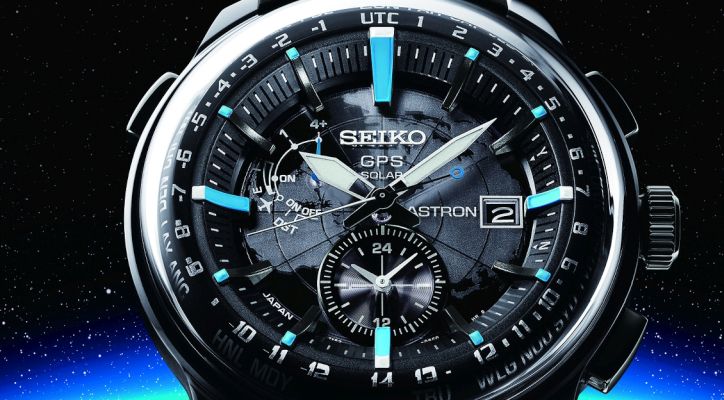
Seiko has officially presented its Seiko Astron Stratosphere GPS-enabled watch. Although currently there is nothing more than a presentation page on their corporate site, it is already clear that the new version looks a lot more impressive than the high-tech Astron GPS Solar World Timer in black titanium that the Japanese brand started selling in October 2012. Just look at this huge, domed sapphire crystal that covers not only the dial itself but also the bezel with its luminous UTC city codes. Isn’t it amazing?
Overall Impression
Presented in a blacked stainless steel body, the Astron GPS Stratosphere looks like a nice accessory for the new edition of Robocop if only that cyborg ever needed a watch. Compared to the previous version, the new Seiko Astron Stratosphere offers an even more massive case with long integrated lugs that are designed to hold either a black silicon band or a more expensive-looking leather strap of the same color.
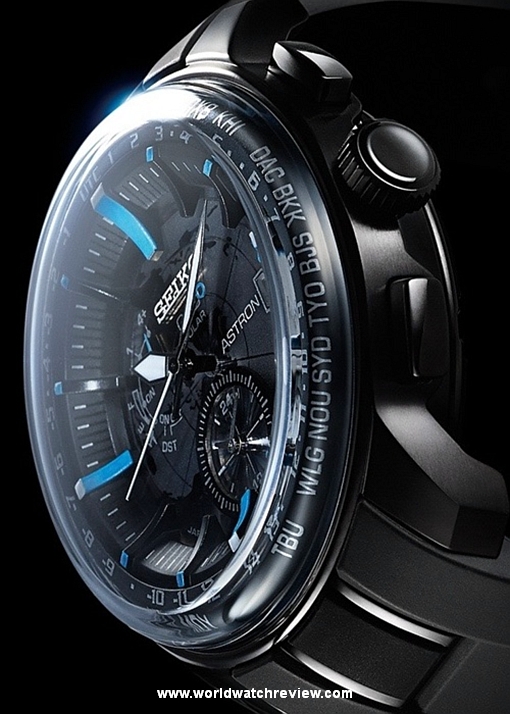
Style-wise, the new timepiece looks like just another Japanese watch, a person who is not deeply interested in horology will possibly never find out that you wear something that costs like a Sony VAIO laptop on your wrist. If you are buying the stuff to make an impression on somebody, tough luck. If you happen to live in a bad neighborhood, that’s actually good: nobody needs a Seiko to buy a shot of a regulated substance.
Case
Despite measuring 47 millimeters in diameter, the gadget doesn’t actually look that big on a normal wrist. Yes, it is wide and, at 16.5 millimeters top to bottom, immensely thick, the rather short lugs partially compensate for it allowing the timekeeper to stay within the natural limits of your wrist.
Still, given its shape and proportions, this is not a watch you want to wear in the office: even despite its defiantly sporty styling, it just won’t feel good with a business suit.
Dial
As I have already noted, this is device is styled like your ordinary Japanese timekeeper. While the black dial offers a perfect background for the visual elements, it still feels cluttered and busy even though there are just four indicators on its face.
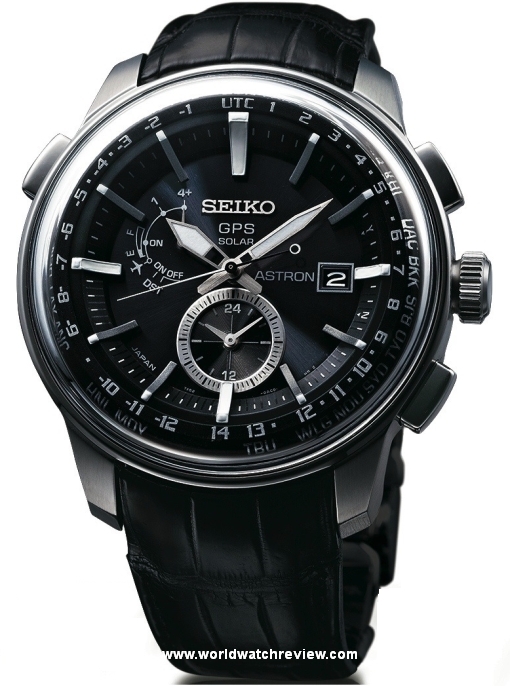
Mechanism
As I have already noted, there are still no official specs for the timekeeper, however, the 3d-model that we have seen in a promo clip above features a “7X52-0AK0” index printed on its stainless steel case back cover, so the mechanism that powers the device must be the same Caliber 7X52 quartz, solar-powered movement.
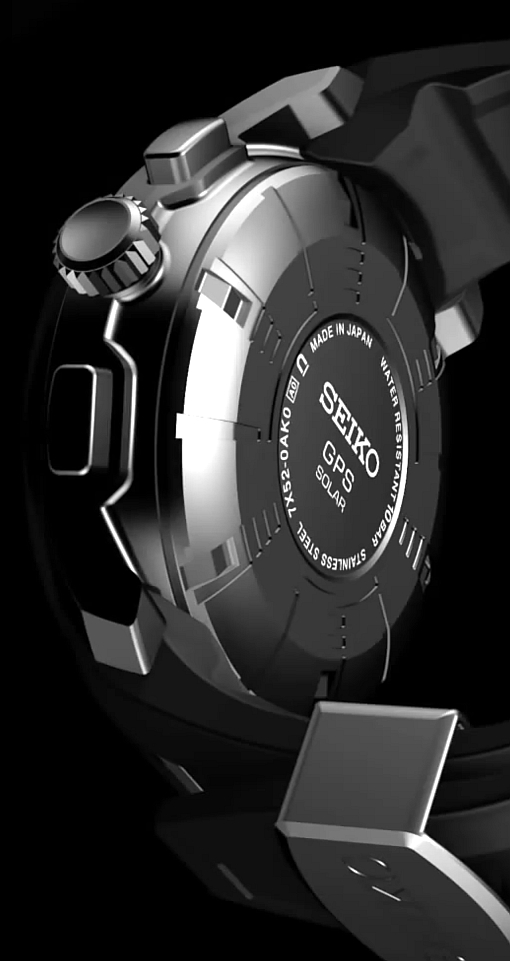
This is also partly confirmed by the timepiece’s stated functionality that includes a perpetual calendar, world time with 39 time zones set by a single push of a button according to the gadget’s current location, as well as a DST (Daylight Saving Time) indicator that makes things even easier (well, not easier if you happen to live in Russia since their MPs still can’t make their minds whether to keep their current DST-free mode or return to the status quo established in the 1980s. Or, perhaps, to invent something even cooler than that.)
UPDATE: Well, it has finally been confirmed that this is indeed a Cal. 7X52 that is ticking inside this gorgeous device. And this is actually interesting since it gives you an idea of how you can make lemonade if life sends you a lemon.
You see, the movement in question is not terribly accurate: in normal conditions, it is allowed to gain or lose approximately 15 seconds per month. It is not something to be proud of per se, and it is certainly something to be ashamed of when you compare it to, for example, the gorgeous ETA Thermoline E20.341 quartz caliber with analog-digital display that powers the last year’s Breitling Chronospace Military SuperQuartz that does the same error in a year!
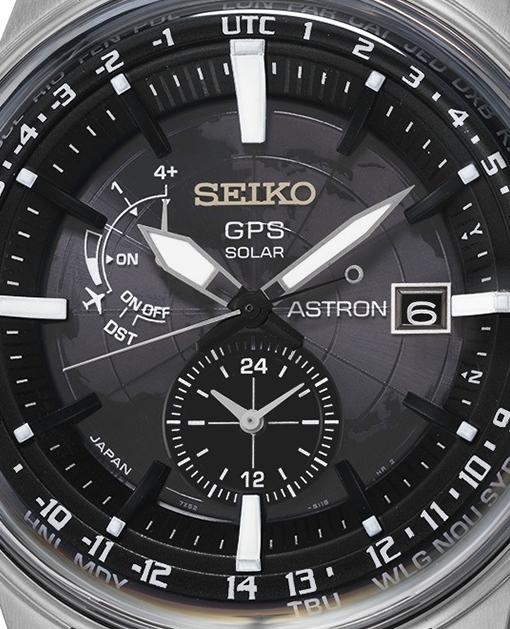
Although deep in my heart I admire how boldly the Japanese watchmaking brand tackled the problem (I am talking about that ‘if we can’t make a movement, which is accurate enough, we will equip it with some fancy tech and sell it at a premium, banzai! approach), there is still something pathetic about it.
I have a feeling that there may be a lot of people who think the same and are not ready to shell their hard-earned cash for something half-baked since, price-wise, the new watch will be significantly less expensive: the Japanese manufacturer plans to sell it for some €2300 ($3100 USD), which is about €1000 cheaper than the 2012 model.
This is great, but, given its functionality (and even despite its gorgeous look), the watch is still too expensive for the young people that tend to buy such gadgets.
See also: Breitling Aerospace Evo SuperQuartz
Photos: Seiko
WWR verdict
Originality 5/5
Build quality: 5/5
Usability: 5/5
Legibility: 4/5
Value for money: 2.5/5
The cool factor: 10/10
Seiko Astron GPS Stratosphere specification
Price: €2300
Movement: Quartz, Caliber 7X52, solar-powered, Made in Japan
Functions: Hours, minutes, seconds, date (perpetual calendar), world time, 39 time zones, DST (Daylight Saving Time), inflight mode
Case and Crown: Stainless steel, black
Bezel: Sapphire
Shape: Round
Size: Around 47 mm
Case height: 16.50 mm
Dial: Black, world map print
Hour markers: Luminous
Hands: Luminous
Water resistance: 100 meters
Strap: Black leather strap or black silicone band
Crystal: Sapphire, Super-Clear antireflective coating, domed, covers the bezel
Back: Solid
